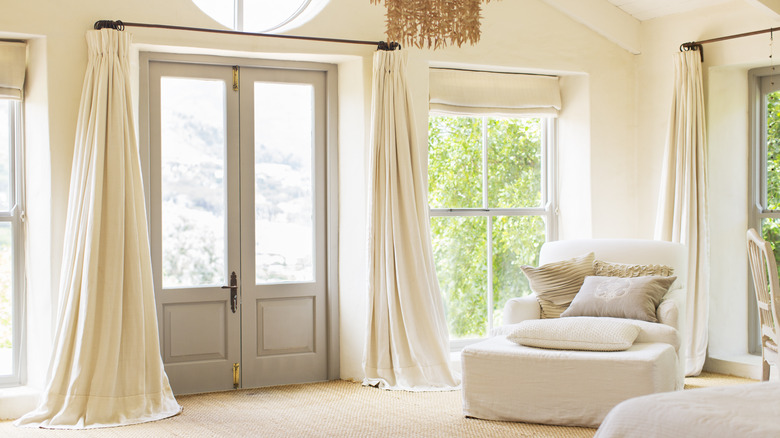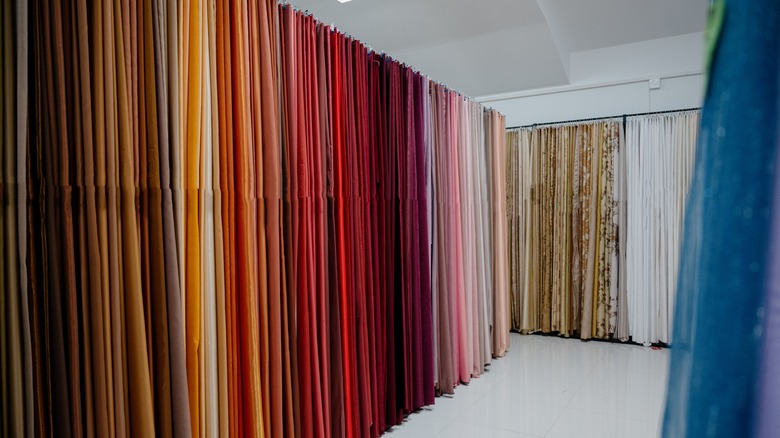The Ingenious Curtain Hack That'll Keep Your Home Warmer For Less
Curtains are known for their privacy-providing benefits for windows and sliding doors. There is also a range of ways to decorate with curtains. And nowadays, certain curtains can also be used to conserve energy in a home. They can help keep the warm air in while keeping the cool air out in the winter, and vice versa in the summer. Although it may be unheard of for some, many homeowners, like Instagram influencer @jamie_athome, place a heavy curtain over their front door (indoors) for these temperature-related benefits.
Houses commonly lose heat through doors, windows, and even wall cracks, among other places. That means heat can also pass through these same areas from the outside, into a home. If your home is many decades old and still has the original front door, there's a good chance that it has small cracks in it. Placing thick, heavy (think velvet) drapes in front of it can help better insulate your home and prevent heat from coming in or escaping.
Best curtains for your front door
The best curtains for your home are, of course, subjective and entirely up to you. However, there are certain features that offer benefits that other curtains don't. For example, if insulation and heat retention — or heat blocking — is your goal, you'll want thermal curtains, which are designed to control the heat transfer on either side of a door or window.
In curtain fabrics, thermal technology essentially helps keep heat in or out. Some curtains will say "thermal" in the online description or printed on the product label. Others may not, but they're heavy and thick enough to offer that benefit, and can be used as such. You can purchase a thermal curtain for as little as $15 or for more than $50, depending on the style and size.
Another aspect to consider when selecting your front door curtain is the number of layers. In your search, you'll likely find many single-layer thermal curtains at a lower price than multi-layer options. However, curtains with multiple layers provide better energy efficiency than single-layer curtains. Regardless of which thermal curtains you choose, take a look at your electric bill and compare it to the previous month, before you used the curtains, to see what the difference is (assuming the weather was relatively similar in both months, of course).

